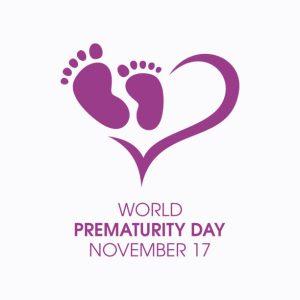National Prematurity Awareness: Reducing Preterm Birth and Improving Neonatal Outcomes

Key Facts:
- About 1 in 10 U.S. infants is born preterm each year, totaling more than 350,000 babies.
- Non-Hispanic Black women experience preterm birth rates that are roughly 50% higher than those of non-Hispanic White women.
- Direct medical costs for a single very-preterm infant can exceed $65,000, compared with $6,700 for a full-term infant.
- Evidence-based interventions (such as low-dose aspirin for high-risk pregnancies, 17-OHP for prior preterm birth, and smoking cessation programs) can cut repeat preterm births by up to 30%.
Editor's Note
This article is part of the BHM Healthcare Awareness Series, designed to provide quick, ready-to-use content and links to official resources for internal staff communications, patient education, and social media.
Feel free to copy, adapt, and share.
Observation Date
November
Why it Matters
Preterm birth (delivery before 37 weeks’ gestation) is the leading cause of infant mortality in the United States and a major driver of long-term neurodevelopmental disabilities. Each percentage point reduction in preterm births lowers neonatal intensive care costs and improves lifelong health trajectories, making prevention a strategic and financial priority for healthcare organizations.
Quick Actions for Your Organization
For Leadership
Integrate preterm birth reduction goals into value-based maternity care contracts and quality dashboards.
Form regional partnerships with public health agencies and community organizations to address social drivers such as housing instability, food insecurity, and transportation barriers.
For Implementation Teams
Launch targeted patient education on early and regular prenatal care, warning signs of preterm labor, and lifestyle risk reduction.
Embed March of Dimes Prematurity Prevention Toolkit materials in patient portals, discharge packets, and prenatal class curricula.
Coordinate telehealth or mobile outreach for high-risk pregnancies to ensure continuity of care and timely referrals.
Resources
Ready-to-Use Assets
The following links provide resources & information for creating internal or external campaigns to support or promote this healthcare observance. Please vet these resources for alignment with your organization.
Talking Points
Copy & Paste Friendly
- “Every week a baby stays in the womb up to 39 weeks can make a critical difference in lifelong health.”
- “Preterm birth rates reflect both clinical care quality and community health equity ‒ addressing both saves lives.”
- “Simple measures like smoking cessation, hypertension control, and early prenatal visits reduce preterm birth risk.”
Disclaimer: Please verify all information, usage rights, and related guidelines with the official observance organizers and your organization’s policies to ensure proper alignment.
Frequently Asked Questions (FAQ)
Q1. What are the most common risk factors for preterm birth?
Prior preterm birth, multiple gestation, short interpregnancy interval, hypertension, diabetes, smoking, and low maternal BMI are leading risk factors for preterm birth.
Q2. How can healthcare organizations reduce preterm birth rates?
Implement risk-based prenatal protocols, provide progesterone therapy or low-dose aspirin when indicated, ensure early prenatal enrollment, and address social determinants such as housing and nutrition.
Q3. What is National Prematurity Awareness Month, and why is it important?
National Prematurity Awareness Month is an annual November observance that highlights the impact of premature birth, promotes prevention strategies, and encourages healthcare systems to adopt evidence-based interventions that improve neonatal outcomes.
Partner with BHM Healthcare Solutions
With over 20 years in the industry, BHM Healthcare Solutions is committed to providing consulting and review services that help streamline clinical, financial, and operational processes to improve care delivery and organizational performance.
We bring the expertise, strategy, and capacity that healthcare organizations need to navigate today’s challenges – so they can focus on helping others.
Are you ready to make the shift to a more effective process?

